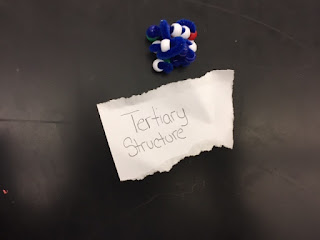S.T.E.M. is a word thrown around so frequently in education, but very few know the intention of having a "S.T.E.M" course in school. Yes, most people know it stands for Science, Technology, Engineering, and Mathematics, but what is puzzling is how these work together to better our education system.
On the surface level, S.T.E.M. may appear to some as a way to make hard science classes easier for those less science oriented by utilizing their hands to demonstrate their knowledge instead of traditional methods. In actuality, S.T.E.M. is not a subject at all, but a teaching philosophy in which the teacher and students are committed to learning in an integrated way; not relying simply on one avenue to learn.
In the modern world, every single job is a multi-faceted system, in which an individual must be able to integrate different skills to perform their job effectively. As a teacher, I am constantly juggling different hats on a daily basis, whether it is biologist, communicator, personal confidant, advisor, paper organizer, grade computer, and the list goes on and on. None of these individual jobs mean much, unless they are integrated with one another. Being a lover of biology doesn't necessarily matter to teaching unless I can also communicate my knowledge to individuals who are newcomers to the field. Being able to organize students' assignments is useless if I cannot calculate grades. By providing courses that rely on the S.T.E.M. philosophy, we are preparing our students for a world where they must integrate skills to perform their jobs.
S.T.E.M. is a way to deepen the understanding of a topic by looking at it from different angles. When studying something such as the circulatory system, you can learn the science behind it, but until you look at the nuances of its detailed engineering you cannot fully develop an appreciation for its intricacies. Having students use engineering principles, they can build their own circulatory system out of household items to demonstrate the challenges our bodies face. Through this approach students learn for themselves how difficult it is to move a liquid, such as our blood, against gravity, therefore requiring a system built around pumps to push it around. Or that you'll need thicker materials to represent arteries than for veins to withstand high pressures coming from the main pump. Not only do students know how the system functions, but also have a deeper understanding of how its structure determines its function through the use of engineering.
In my opinion, there are no set "S.T.E.M." classes, but simply every class that falls under this acronym can benefit from utilizing the other three letters. The quadratic formula means nothing if not put into context of an engineering problem. Science that cannot be seen with the naked eye, can be enhanced through technological advances.
S.T.E.M. is not simply a group of letters, but a way to prepare our students for their futures.








































